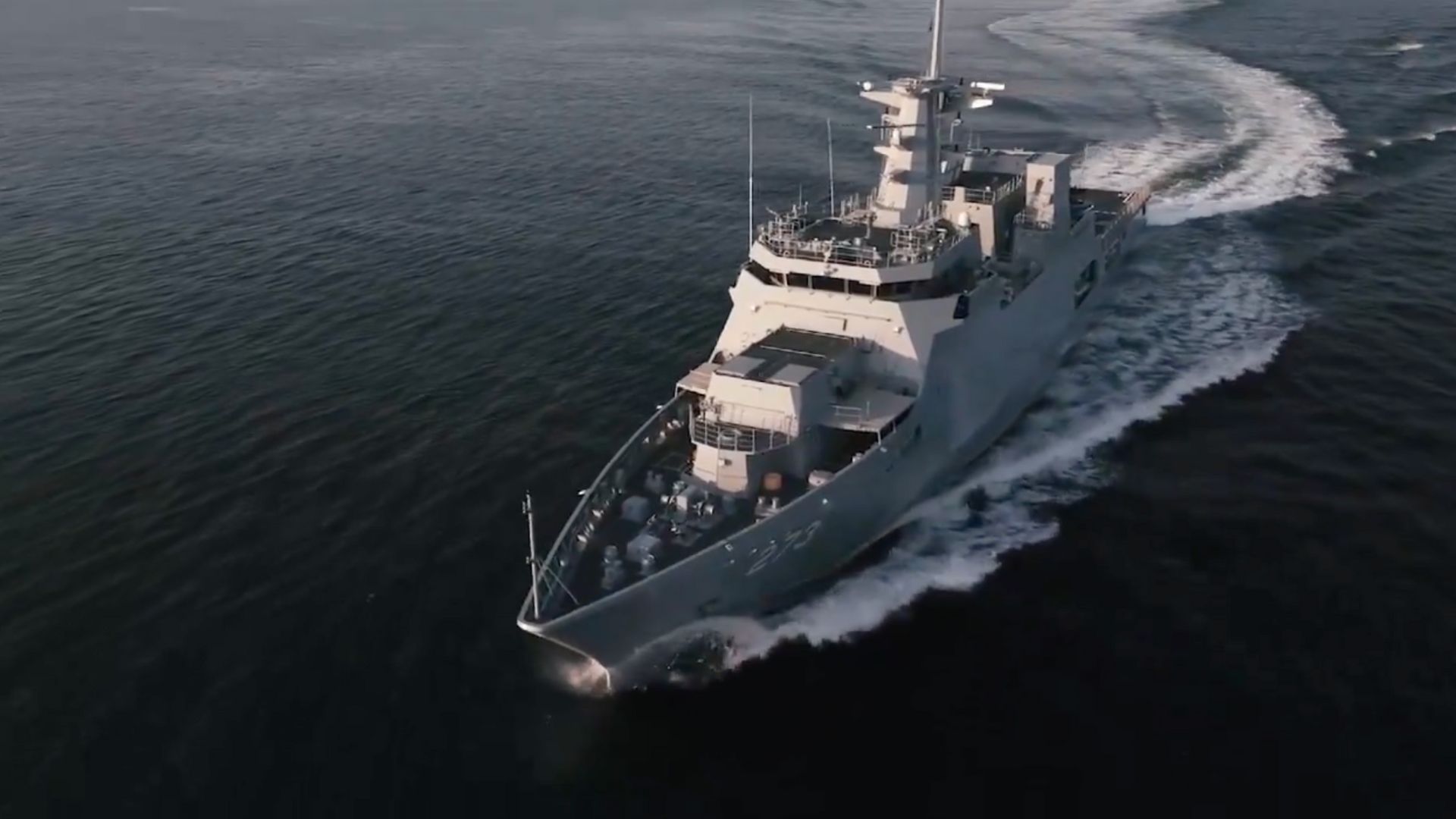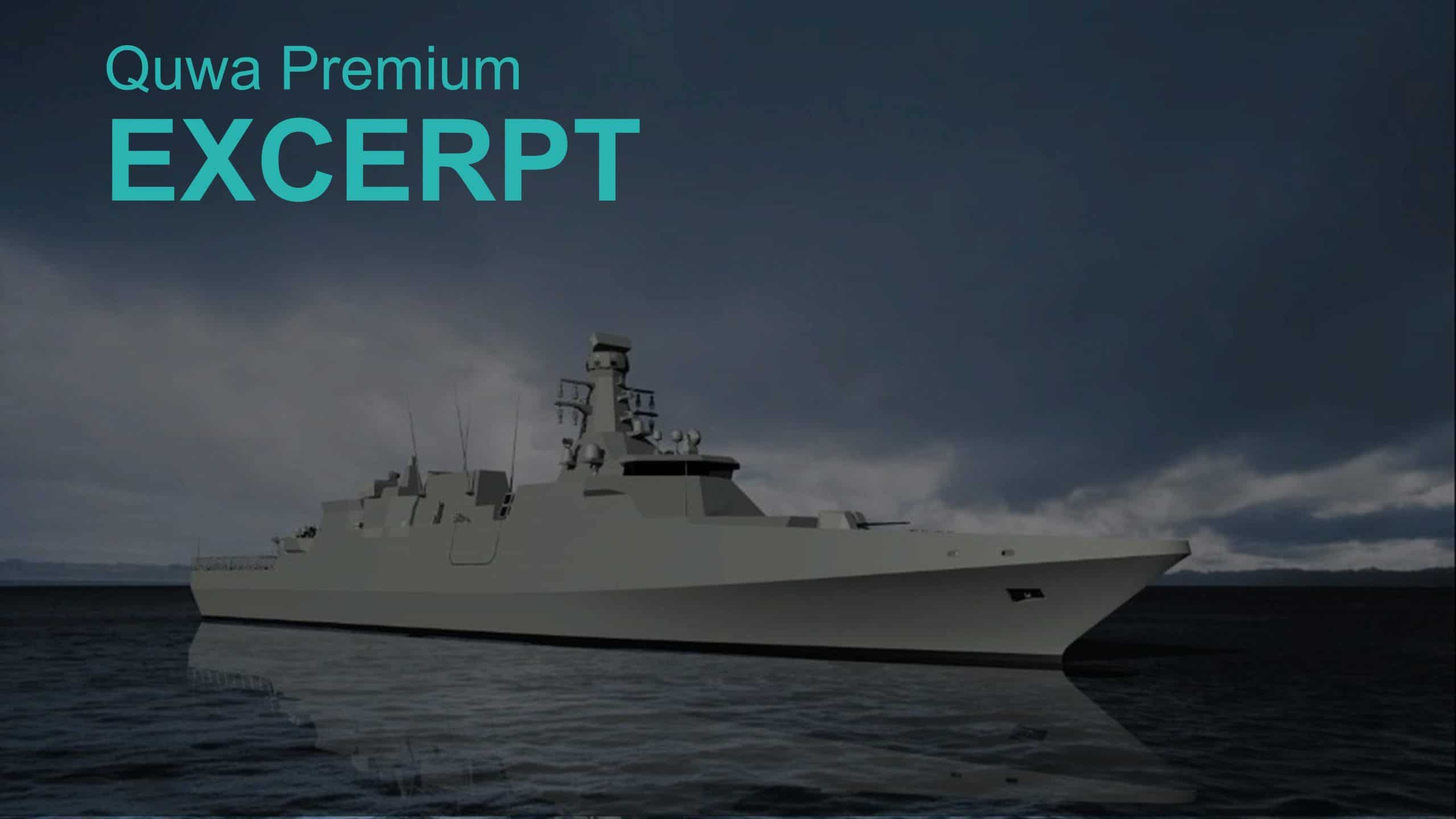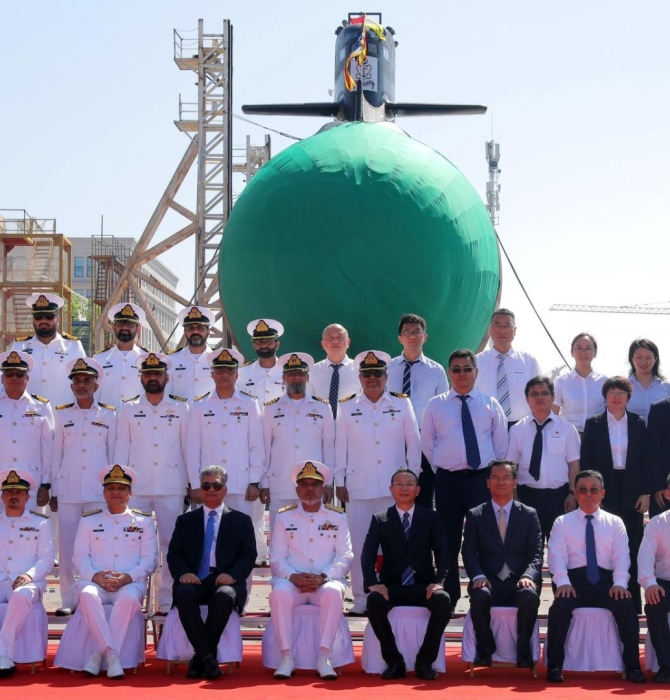4962Views

Pakistan Receives First Yarmook-Class Batch-II OPV (PNS Hunain) Quwa Premium
Bilal Khan
Founder of Quwa, Bilal has been researching Pakistani defence industry and security issues for over 15 years. His work has been cited by Pakistan's National Defence University (NDU), the Council of Foreign Relations, Bulletin of Atomic Scientists, Centre of Airpower Studies and many others. He has a Hons. B.A in Political Science and Masters of Interntional Public Policy from Wilfrid Laurier University in Waterloo, Ontario, Canada.
On 26 July, the Pakistan Navy (PN) announced that it took delivery of its third Yarmook-class offshore patrol vessel (OPV), PNS Hunain, from Damen Group’s shipyard in Galati, Romania. As of 09 August, PNS Hunain was en-route to Pakistan from Romania. The fourth OPV is undergoing sea trials.
PNS Hunain is the first of two Yarmook-Class Batch-II ships. This pair is based on Damen’s OPV-2600 design, which is larger and more capable than the OPV-1900-based tranche already in service with the PN, i.e., PNS Yarmook and PNS Tabuk.
Construction of the Batch-II OPVs began in October 2022, with PNS Hunain beginning sea trials in September 2023, while the fourth ship was launched in February 2024.
Besides the greater size and displacement, the OPV-2600 can carry surface-to-air missiles (SAM) from a vertical launch system (VLS), giving the PN’s Batch-II OPVs credible short-to-medium-range air defence capabilities comparable to the fleet’s larger corvettes and frigates.
In addition, the PN is expected to configure the PNS Hunain and its forthcoming sister ship with anti-ship cruising missiles (ASCM), a main air and surface surveillance radar, electronic support measures (ESM) suite, and multirole helicopter. In effect, the Batch-II OPVs will be fully capable combatants.
Currently, however, it is unclear when the PN plans to fully configure PNS Hunain – or, for that matter, its earlier OPVs – as intended. Thus far, none of the OPVs have been armed with ASCMs, for example. For now it seems that the primary role of the OPVs is to support sea policing and/or low-intensity operations, such as counter-insurgency, counter–terrorism, anti-piracy, and anti-smuggling missions. PNS Hunain is coming to Pakistan without its VLS and SAM load, at least for the time being.
It is also worth noting that the Damen OPV-1900/2600 designs can also carry containerized modules for different missions, including anti-submarine warfare (ASW), mine countermeasures vessel (MCMV), and humanitarian and disaster relief (HADR) operations, like search-and-rescue (SAR).
Background on the PN's OPV Program
Pakistan’s Ministry of Defence Production (MoDP) signed a deal with the Dutch shipbuilder Damen Group for two OPV-1900 ships with an option for two more in 2017. The contract was a result of a tender that had also involved the American contractor Swiftships, which promoted its 75 m ‘Swift Corvette.’
The OPVs were sought to support a variety of roles, especially anti-ship warfare (AShW), anti-air warfare (AAW), day and night helicopter operations, combat search and rescue (CSAR), and surveillance as well as electronic intelligence (ELINT) operations, among others.
The first of these OPVs – i.e., PNS Yarmook – was launched for sea trials in May 2019. By then, the vessel was revealed as a 2,300-ton design capable of carrying ASCMs, a 25 mm or 30 mm gun mounted upon a remote-weapon turret, a close-in-weapons-system (CIWS) for AAW, and ESM suite.
The PN commissioned PNS Yarmook in February 2020 and its sister ship, PNS Tabuk, in November 2020. In 2020 or 2021, the PN contracted Damen Group for the Batch-II/OPV-2600 ships, the first of which went into production in October 2022.
It is unclear exactly when the PN ordered the Batch-II ships. However, in October 2020, then PN Chief of Naval Staff (CNS), Admiral Zafar Mahmoud Abbasi, stated that the PN “contracted” six ships of a “larger tonnage” in apparent reference to the OPV program. Therefore, it is possible (though still uncertain) that the Batch-II/OPV 2600s were part of the follow-on program for six additional ships.
Log in or subscribe to read the rest of the article
End of excerpt (571/1,292 words)
Note: Logged in members may need to refresh the article page to see the article.


